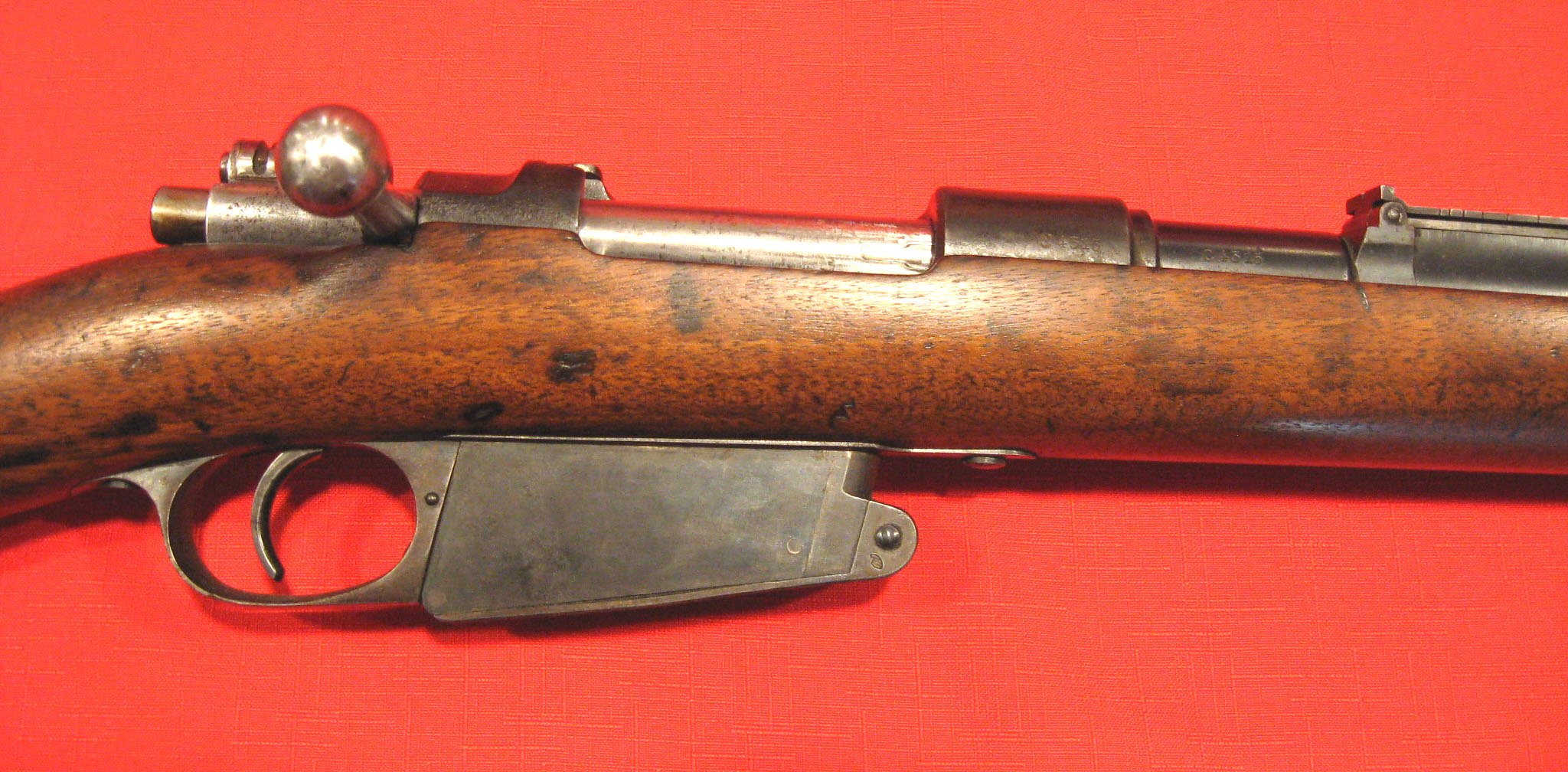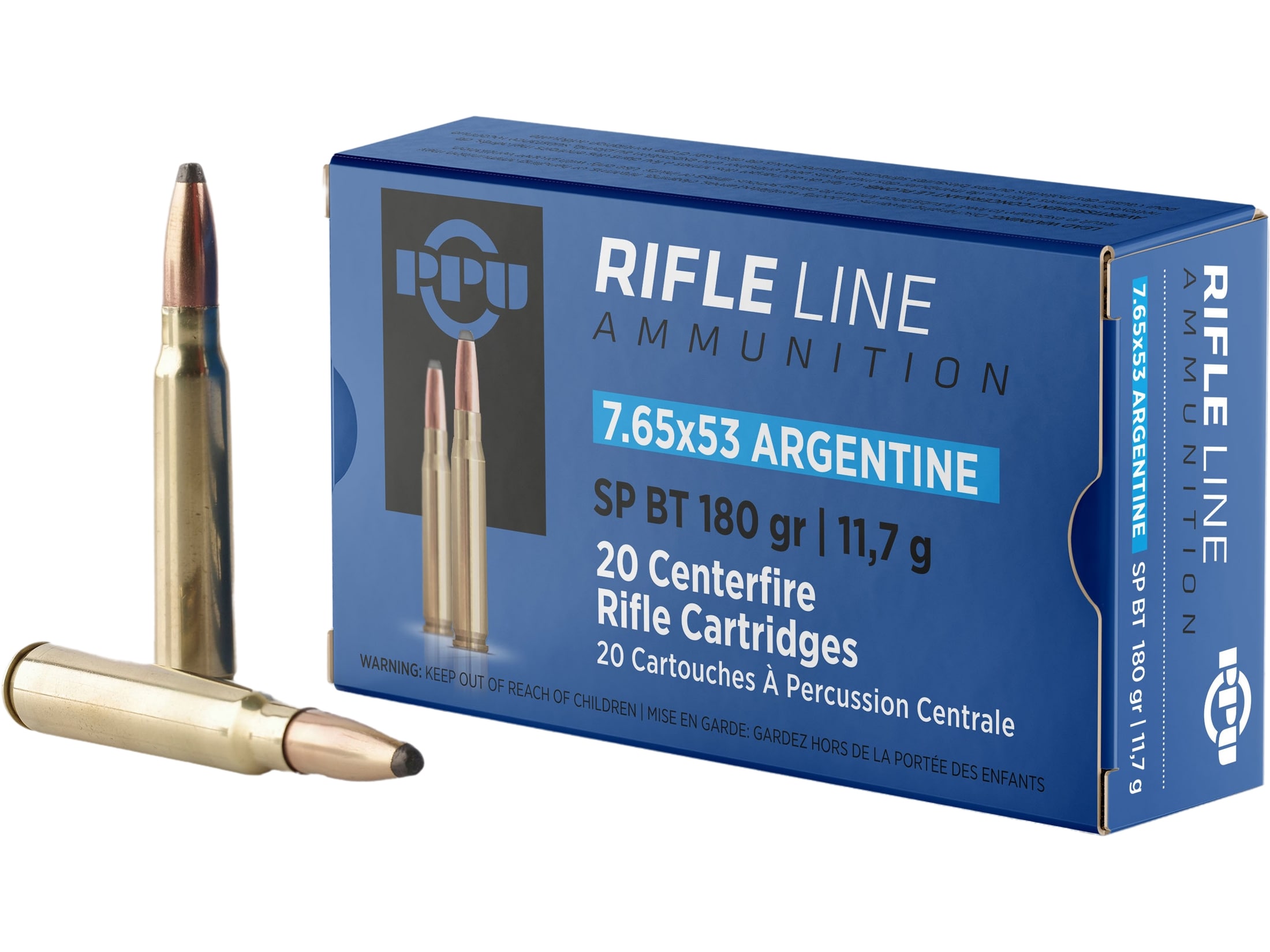

The serial number C 5337 is marked on the barrel, receiver, stock, and bolt, though the stock marking looks to have been restruck, so this carbine definitely was reconditioned at arsenal during some point during its life. Those Argentine Mausers made after this were then marked with the D.W.M. This large corporation was formed in 1896 when Ludwig Loewe & Company united all of its weapons and ammunition production facilities within one company. This example was made in 1898, as stamped on the receiver, and was produced by the legendary Deutsche Waffen- und Munitionsfabriken Aktiengesellschaft (German Weapons and Munitions public limited company), or D.W.M. This development allowed for faster firing and was well received.

Another defining characteristic, unlike most Mausers, was a spring-loaded cock on closing bolt action resembling that of the British Lee-Metford, which predates the Mauser 1889 by five years. By many accounts, the barrel jacket was not appreciated by its operators who depended on a perfect rifle in conflict. Not only was it expensive but it was also needed in huge quantities to provide for tens of thousands of soldiers. Furthermore, another design flaw of the jacket was its extra steel content. As such, barrel quality was affected over time regardless of the protective measure. In addition, the jacket was not perforated in any such way as to relieve the barrel of any heat build-up and consequently proved prone to denting. In spite of this approach, the jacketed barrel proved susceptible to moisture build-up and, therefore, introduced the problem of rust forming on the barrel itself–unbeknown to the user.

The jacket was instituted as a feature intended to maintain the effectiveness of the barrel and the solid wooden body over time, otherwise lengthening its service life and long-term accuracy when exposed to excessive firing and battlefield abuse. One of the principal defining features of the Belgian/Turkish/Argentine Mauser was its thin sheet steel jacket surrounding the barrel-a rather unusual element not common to any other Mauser mark of note. As with other early Mausers, most such arms were made by the Ludwig Loewe company, who in 1896 joined with other manufactures to form Deutsche Waffen und Munitionsfabriken. Since they wished to keep retraining of their armed forces to a minimum, they went for the Mauser 91, as the operating principles were identical. This resulted in a new contract for the Model 1890 Turkish Mauser. While this was taking place, the Argentine Small Arms Commission contacted Mauser in 1886 to replace their own Model 71s. The contract however had an "escape clause" that allowed them to change the contract in the event of a more advanced Mauser system being developed. This company would go on to become a major arms manufacturer, which exists today as FN Herstal.Īt the same time, the Ottoman Empire had a contract for Model 1877 Turkish Mausers, which were based on the model 1871. This resulted in the founding of Fabrique Nationale d'Armes de Guerre, owned in part by Ludwig Loewe, to manufacture the Model 1889 Belgian Mauser. At the time, Belgium was looking to bolster its domestic arms industry, and felt that manufacturing a Mauser Design would really help them in this goal.
#1891 argentine mauser carbine ammo update#
However, Mauser already had supplied arms to numerous countries, and when they were looking to update their rifles, they came back to Mauser. Unfortunately they failed to convince the Commission to reverse its decision, and the attempt to win over Bavaria did not succeed either.

The Mauser Company then set about trying to sell this new design. The main features were the ability to use stripper clips to feed the magazine (a revolution in rate of fire), and its rimless cartridge (7.65 Argentine Mauser), advanced for the time. The two rifles became known as the 89 Belgian (with a barrel shroud) and the 91 Argentine (with a 71 layout) Mausers, identical in their function and feed system. In the meantime, Paul Mauser created two different variations of the same rifle, one with a stock strengthened with a barrel shroud and a traditional design following the layout of the 71 series, in hope he might be able to overturn the commission's decision, or at least sell his design to the Kingdom of Bavaria, which adopted its own arms. The commission preferred to create their own design, which was what became the Gewehr 1888, often called the "Commission Rifle". Because of setbacks brought on by Wilhelm Mauser's death, they failed to have the design completed by 1882, and the German Rifle Test Commission ( Gewehr-Prüfungskommission) was formed. After the Mauser brothers finished work on the Model 71/84 for Germany in 1880, the design team set out to create a small caliber repeater that used smokeless powder. This is a very nice example of the Model 1891 Argentine Mauser rifle, one of many "export" models made for foreign governments, all based on the Mauser Model 1889.


 0 kommentar(er)
0 kommentar(er)
